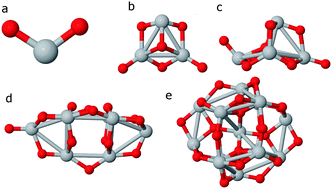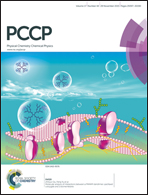The interactions between TiO2 and graphene with surface inhomogeneity determined using density functional theory
Abstract
TiO2/graphene composites have shown promise as photocatalysts, leading to improved electronic properties. We have modeled using density functional theory TiO2/graphene interfaces formed between graphene with various defects/functional groups (C vacancy, epoxide, and hydroxyl) and TiO2 clusters of various sizes. We considered clusters from 3 to 45 atoms, the latter a nanoparticle of ∼1 nm in size. Our results show that binding to pristine graphene is dominated by van der Waals forces, and that C vacancies or epoxide groups lead to much stronger binding between the graphene and TiO2. Such sites may serve to anchor TiO2 to graphene. Graphene surfaces with hydroxyls however lead to OH transfer to TiO2 and weak interactions between the graphene and the hydroxylated TiO2 cluster. Charge transfer may occur between TiO2 and graphene in various directions (graphene to TiO2 or TiO2 to graphene), depending on the state of the graphene surface, based on overlap of the density of states. Our work indicates that graphene surface defects or functional groups may have a significant effect on the stability, structure, and photoactivity of these materials.


 Please wait while we load your content...
Please wait while we load your content...